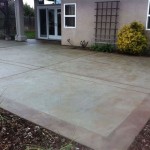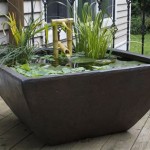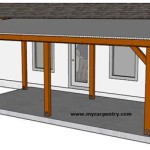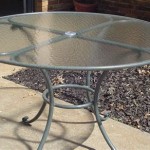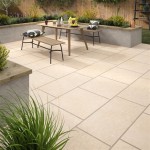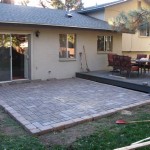Bringing Spanish Style To Your Patios And Living Room
Spanish design, with its rich history and diverse influences, offers a compelling aesthetic for both patios and living rooms. The style's warmth, vibrancy, and inherent connection to nature can transform these spaces into inviting and visually captivating areas. This article explores practical ways to incorporate Spanish design elements into these key areas of the home, focusing on key characteristics and adaptable components.
Embracing Earthy Tones and Natural Materials
One of the defining features of Spanish style is its grounding in natural elements. The color palette often revolves around earthy tones, reflecting the landscapes of Spain. Think terracotta reds, ochre yellows, and sandy beiges for walls, flooring, and accent pieces. These warm hues create a sense of comfort and authenticity.
In living rooms, consider painting walls in a warm neutral tone, or using textured plaster to mimic the look of traditional adobe. Area rugs made from natural fibers like jute or sisal can add texture and warmth underfoot. Upholstery should also reflect this natural aesthetic, with linen, cotton, or even leather being excellent choices for sofas and chairs.
For patios, the use of terracotta tiles is a classic touch. These tiles are durable, visually appealing, and naturally cooling. Stone pathways and gravel areas further enhance the natural feel. Weather-resistant outdoor furniture made from wood or wrought iron complements the terracotta and adds to the overall Spanish aesthetic.
Beyond color and texture, the integration of natural materials is crucial. Wooden beams, whether structural or decorative, can add rustic charm to living rooms. Stone fireplaces, either functional or decorative, serve as focal points and enhance the sense of history and warmth. Clay pottery, both indoors and outdoors, provides a link to traditional Spanish craftsmanship. Large earthenware pots filled with plants are particularly effective on patios, adding both visual interest and a touch of greenery.
Avoid highly polished or synthetic materials. The beauty of Spanish design lies in its imperfections and raw textures. Embrace the natural variations in wood grain, stone, and fabric for an authentic and inviting space.
Incorporating Decorative Elements and Architectural Details
Beyond the foundational elements of color and materials, specific decorative features and architectural details are essential to capturing the essence of Spanish design. These elements can be integrated in both living rooms and patios to enhance the visual appeal and create a unified aesthetic.
Wrought iron is a signature material in Spanish design. It can be incorporated in various ways, from ornate light fixtures to decorative grilles and furniture frames. Wrought iron chandeliers or sconces can add a touch of elegance to living rooms, while wrought iron patio furniture is both durable and aesthetically pleasing.
Tilework is another important aspect of Spanish design. Hand-painted ceramic tiles, often featuring intricate patterns and vibrant colors, can be used as backsplashes in kitchens adjacent to living rooms, as decorative accents on walls, or even as part of a patio fountain or pool surround. The intricate patterns and bright colors of these tiles add visual interest and a sense of handcrafted artistry.
Arches are a quintessential architectural feature in Spanish homes. If structural arches are not present, they can be incorporated through decorative elements. Arched doorways, window frames, or even arched niches can add a touch of Spanish flair to the space. In patios, consider building an arched pergola or using an arched garden gate to create a sense of entry and enclosure.
Textiles play a crucial role in adding warmth and visual interest. Consider using colorful throw pillows with geometric patterns or embroidered details on sofas and chairs. Heavy drapes made from natural fabrics can add privacy and a sense of drama to living rooms. On patios, colorful outdoor cushions and throw blankets can make the space more inviting and comfortable.
Mirrors, especially those with ornate frames, can also enhance the sense of space and light. Position mirrors strategically to reflect natural light and create the illusion of a larger room. Grouping decorative objects, such as pottery or family heirlooms, on shelves or mantels can add personality and visual interest to living rooms.
Creating Indoor-Outdoor Flow and Connection to Nature
Spanish design emphasizes the connection between indoor and outdoor spaces. The climate of Spain encourages a lifestyle that seamlessly blends the interior and exterior, and this philosophy can be adapted to create a cohesive and inviting living environment. Creating a smooth transition between the living room and patio is crucial for achieving this sense of flow.
Large windows and doors are essential for maximizing natural light and creating a visual connection to the outdoors. Consider installing French doors or sliding glass doors that open directly onto the patio. This allows for easy access and visually extends the living room into the outdoor space. If possible, match the flooring materials in the living room and patio to create a seamless transition. For example, if the living room has terracotta tile flooring, extend the same material onto the patio.
Plants are an integral part of Spanish design. Bring the outdoors in by incorporating potted plants into the living room. Large leafy plants, such as ferns or palms, add a touch of greenery and create a sense of connection to nature. On the patio, create a lush and inviting space with a variety of plants, including flowering shrubs, climbing vines, and aromatic herbs.
Water features can also enhance the connection to nature. A small fountain or water feature on the patio can create a soothing ambiance and attract birds. The sound of running water adds a sense of tranquility and helps to mask noise from the surrounding environment.
Outdoor lighting is crucial for creating a welcoming atmosphere on the patio. Use a combination of ambient and task lighting to create a layered effect. String lights, lanterns, and sconces can add a warm and inviting glow. Consider using solar-powered lights to conserve energy and reduce your carbon footprint.
Finally, consider creating an outdoor dining area on the patio. A table and chairs can provide a space for al fresco meals and gatherings. Adding an outdoor grill or fireplace can further enhance the outdoor living experience. By creating a functional and inviting outdoor space, you can extend the living room into the patio and enjoy the benefits of indoor-outdoor living.
By implementing these design principles, it is possible to successfully bring the essence of Spanish style to patios and living rooms. The result is a warm, inviting, and visually appealing space that reflects the beauty and history of Spanish design.

Spanish Modern Interior Design How To Blend Traditional Warmth With Contemporary Flair Decorilla

Get Inspired With These Easy Mediterranean Patio Design Ideas

Spanish Modern Interior Design How To Blend Traditional Warmth With Contemporary Flair Decorilla

Sneak K Modern Spanish Style Client Backyard

Stunning Modern Spanish Living Room Designs Edward George

Spanish Revival Transformation Collected A Journal By Modern Nest

Spanish Style Water Wise Front And Back Yards Garden View Landscape Nursery Pools

Stunning Modern Spanish Living Room Designs Edward George

15 Best Hacienda Spanish Style Interior Decor Ideas For Home A House In The Hills

Incorporating Spanish Interior Design Into Your Home Decor Designer Los Angeles
Related Posts

